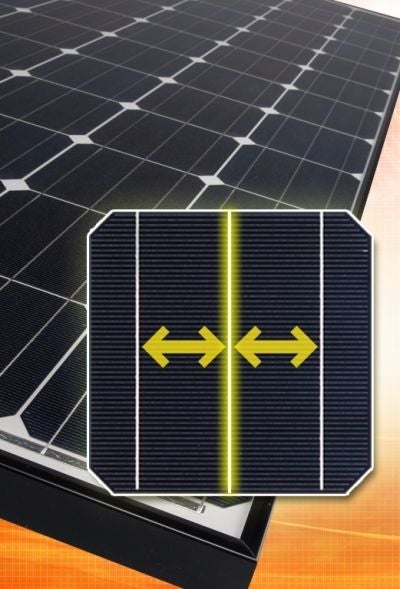Your support helps us to tell the story
From reproductive rights to climate change to Big Tech, The Independent is on the ground when the story is developing. Whether it's investigating the financials of Elon Musk's pro-Trump PAC or producing our latest documentary, 'The A Word', which shines a light on the American women fighting for reproductive rights, we know how important it is to parse out the facts from the messaging.
At such a critical moment in US history, we need reporters on the ground. Your donation allows us to keep sending journalists to speak to both sides of the story.
The Independent is trusted by Americans across the entire political spectrum. And unlike many other quality news outlets, we choose not to lock Americans out of our reporting and analysis with paywalls. We believe quality journalism should be available to everyone, paid for by those who can afford it.
Your support makes all the difference.Manufacturers of the world's most efficient solar cell claim the device is more reliable than that benchmark of dependency - the Swiss clock.
The latest in the HIT series of solar cells, the HIT-N240SE10 manufactured by SANYO Component Europe GmbH has the world's highest cell conversion efficiency rating of 21.6 percent. Essentially this means that fewer units are needed to generate larger amounts of energy.
Based on the percentage of warranty cases against solar units supplied, SANYO claim that the cell has a reliability rating of 99.9962 percent, meaning than the new cells are more reliable than Swiss clocks, which SANYO claim have a reliability rating of 99.9930 percent. Due to its high efficiency rating and reliability, the product is targeted towards home owners hoping to benefit from alternative energy but constrained by limited installation space and concerns over reliability. Other alternative energy solutions for home owners with limited installation space may come in the form of ground breaking technology being developed by Cambridge University. In September 2010 Cambridge University in partnership with the Carbon Trust announced the development of organic solar cells attached to transparent, flexible sheeting which could simply be "rolled out" and attached to surfaces such as windows, therefore reducing the need for a traditional installation space such as a roof.
The HIT-N240SE10 is expected to be released on a commercial basis across Europe in early 2011. Prior to the release of this new photovoltaic module the highest efficiency rating of a commercial solar cell was 21.1 percent, which was also achieved by a SANYO HIT cell.
Read more on the best solar panels

Join our commenting forum
Join thought-provoking conversations, follow other Independent readers and see their replies
Comments